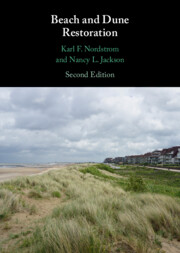We examined the benthic macroinfauna at three strata during two seasons (winter and summer) on two sandy beaches (dissipative and reflective) in south-eastern Brazil. The hypothesis raised is that effects of morphodynamics and zonation determine the structure of macroinfauna, with dissipative beaches having comparatively higher species richness and density than the reflective beaches. Flamengo beach (dissipative) had higher species richness but lower density compared to Grumari beach (reflective). A high dissimilarity in assemblage structure (91.75%) was detected between the two beaches. Zonation in the occurrence of macroinfauna was detected for the two beaches in the two examined seasons. At Grumari beach, Emerita brasiliensis occurred mainly in stratum 1 (intertidal swept zone) while Saccocirus sp. occurred in stratum 2 (infralittoral at 0.5 m depth), whereas at Flamengo beach E. brasiliensis and Enoploides sp. had the highest density in stratum 1 (intertidal swept zone) whereas Scolelepis goodbodyi and Donax uncinata dominated in stratum 3 (infralittoral at 1.0 m depth). Scolelepis goodbodyi, Dispio uncinata, Enoploides sp., Nematoda and Trileptium sp. were associated with higher a Dean parameter and content of organic matter at Flamengo beach. In contrast, Hastula sp., Donax sp., Pisionidens indica, Hemipodus californiensis, Saccocirus sp. and Phyllodocidae were associated with the higher wave period and grain size of Grumari beach. The hypothesis that macroinfauna structure differs between the beaches and strata was confirmed, with the dissipative beaches having comparatively higher richness but lower density than the reflective beaches.


